Two matuku chicks have been rescued and brought into ARRC Wildlife Trust this week.
Usually a shy bird, well-camouflaged and rarely seen, the birds were found around the Waimapu Estuary.
The chicks make a total of five matuku chicks brought into ARRC for care over the last two years, with the first three chicks rescued in January 2016. A critically threatened species, the matuku, commonly known as the Australasian bittern, a type of heron, has a population of less than 1,000 in New Zealand.
'ARRC receives more than 700 injured and orphaned birds each year and this was a rare and exciting occurrence,” says ARRC Wildlife Trust Veterinarian Dr Liza Schneider.
'In 2016, three chicks were brought into ARRC Wildlife Trust for care. ARRC worked with DOC and the birds were taken to Hamilton where they were reared into adults.
'Two of them survived and had transmitters attached so that they could be monitored and more could be learned about this threatened species once they were released back into the wild.”
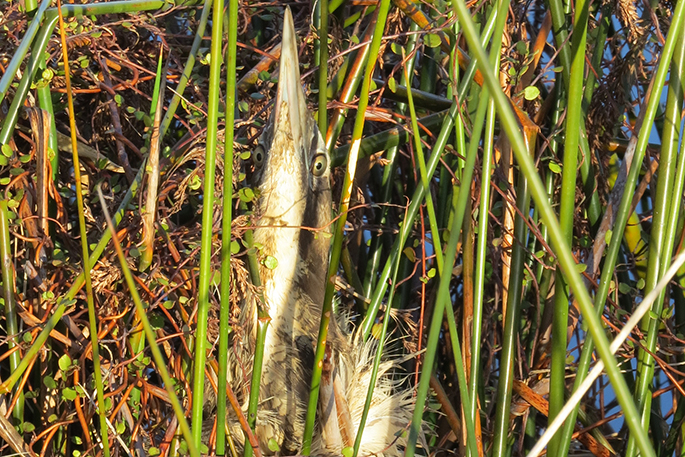
Two years on, one of the monitored birds has been seen incubating a clutch of eggs, regarded by DOC as a fantastic development since no other rehabilitated bittern has survived in NZ for this long with a transmitter on.
'Of the first three chicks in January 2016, one died shortly afterwards,” says Department of Conservation Ranger Karl McCarthy.
'Two were rehabilitated & released. One was a male, unfortunately he was hit by a vehicle. This is a common demise of bittern, having habitat close to roads and being big heavy birds that are slow to get up into the air and away from vehicles.
'The other bird was a female. She is significant for matuku nationally as she is the only female in the country with a transmitter. Males are easier to catch as they are territorial and can be caught by playing their calls back on a sound recorder.
'We are still developing a method to catch females but in the meantime rehabilitating them from chicks is the only way we have been able to monitor female survival and nesting success.
'There seems to be a heavy bias in the population towards males. We think this is because females are more vulnerable throughout the nesting period.”
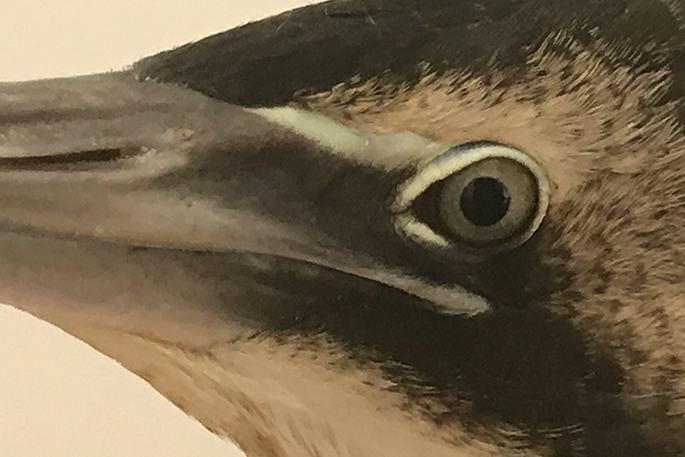
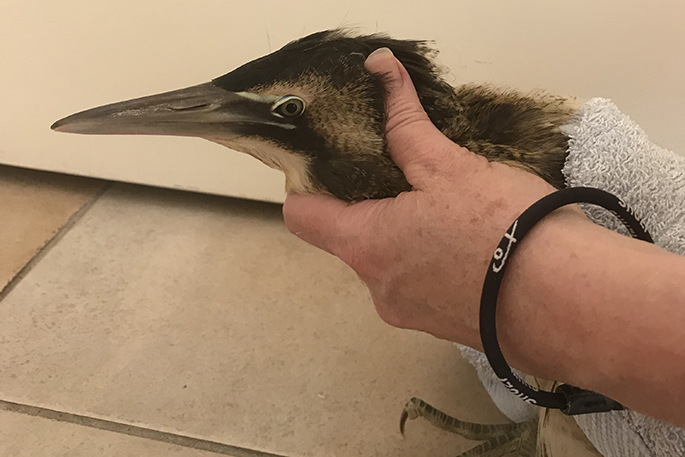 This week two more matuku chicks were rescued and brought into ARRC.
This week two more matuku chicks were rescued and brought into ARRC.
'One brought in by the Tauranga SPCA and another brought in by a member of the public,” says Liza. 'Both were found to be in good health and have now been transferred to Hamilton for further care.”
'They've basically just walked off the nest,” says Karl, who says they were found in properties bordering the Waimapu Estuary. 'Something has happened and we're not sure what. It could be that the nest got predated on and the chicks had to go out and fend for themselves. And they end up wandering off to odd places. Or it could be that there's not enough food in the estuary. Matuku use both wetland and estuary habitats. Oioi rushland habitats within estuaries seem to be a hot spots for nesting.”
'They've recently been reclassified as critically endangered,”a says Karl. 'A significant decline has been documented since the 1970's and loss of habitat is considered a major contributor.”
'In NZ we've drained 90% of our wetlands. That's the habitat they're dependent on.”
Founded in 2003 by Dr Liza Schneider, ARRC Wildlife Trust has been assisting the Department of Conservation, Vet clinics and public with the rescue and rehabilitation of injured and orphaned wildlife in the Bay of Plenty.
Matuku are important to Māori. They appear in language as part of legends, stories, early pictures and metaphor and there are numerous place names referring to them.
When Europeans arrived they were abundant, but now it is rare to see more than one at a time. Australasian bittern are also found in Australia and New Caledonia, but populations there have declined dramatically and they are now classed globally as endangered.
In New Zealand, they are mainly found in wetlands of Northland, Waikato, East Coast of the North Island, and the West Coast of the South Island.
Matuku are a potential indicator of wetland health because they are dependent on the presence of high quality and ecologically diverse habitats and rich food supplies.
Although wetlands support a range of threatened species, management techniques for restoring populations are poorly developed.
Developing methods for surveying and monitoring bittern systematically has been a focus for DOC. These methods will establish baseline data and distribution maps; identify important wetland habitat types for conservation; measure the response of matuku to management such as pest control, habitat maintenance and restoration.
DOC has been developing ‘call counts' for bittern. These take place with either an observer listening for set times at dawn or dusk for the booming calls of bittern, or with new automatic recorders (electronic recorders developed by the DOC Electronics Lab) recording calls remotely.
DOC are also developing methods for restoring wetlands through the Arawai Kākāriki programme. Restoration involves developing management tools including methods for controlling weeds and predators, managing water levels water quality, and restoring wetland vegetation and food supplies for bitterns.
'I do a bit of work locally with mataku,” says Karl. "It's been a real community project with some great volunteers following birds with transmitters around. We've all learnt a lot.
'They're a very cryptic secretive species. They're not often seen. As a result people's awareness of them is quite low. The two young chicks found are at the near fledging stage. Their feathers are not quite fully developed.”
The chicks will be assessed before releasing, and may not be released back in the same spot. The decision will be made alongside iwi.
'It may not be a good idea to release them back into a habitat where we know they've failed,” says Karl. 'We release them locally, but it may not be that estuary.”
The birds will have transmitters attached so that they can be monitored after being released back into a wetland area.
The Department of Conservation ask that the public help by reporting any sighting of a matuku or their booming call, to their nearest DOC office.
To help protect NZ native birds it is important when visiting parks, beaches, rivers and lakes to only take dogs to areas that allow them, and keep them under control. When visiting beaches, available access ways to get to the beach should only be used, nesting birds should be left alone, and leaving old fishing lines on beaches or in the sea should be avoided. The water care code and local navigation bylaws should be followed, and vehicles are required to keep to formed tracks rather than drive on riverbeds.
Other ways the public can help protect native bird species is to get dog trained in avian awareness, volunteer to control predators and restore bird habitats, set predator traps on their property, and put a bell on their cat's collar, feed it well, and keep it indoors at dusk, dawn and at night.
Call 0800 DOC HOT (0800 362 468) immediately if you see anyone catching, harming or killing native wildlife.
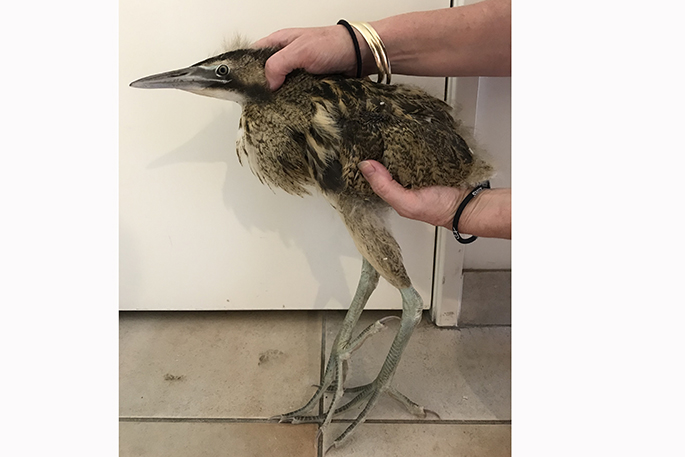
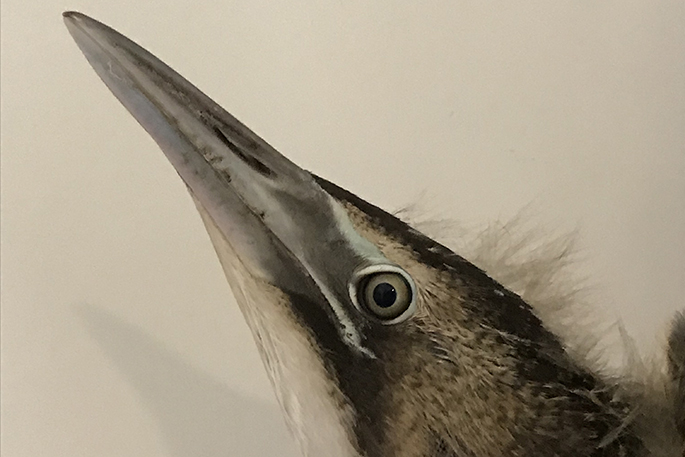
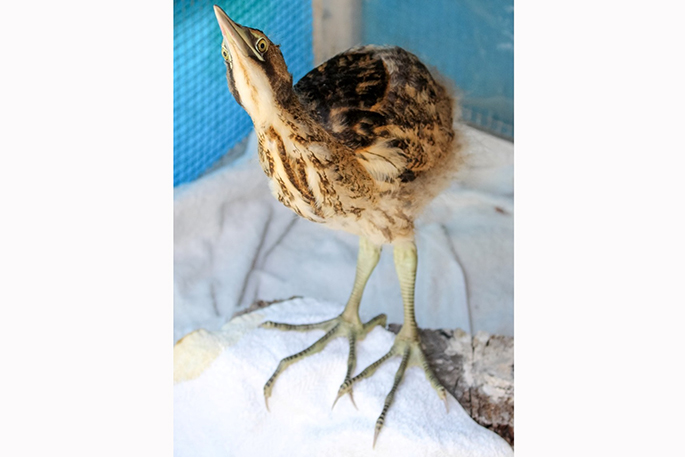
One of the bittern chicks rescued in 2016 (photo supplied)

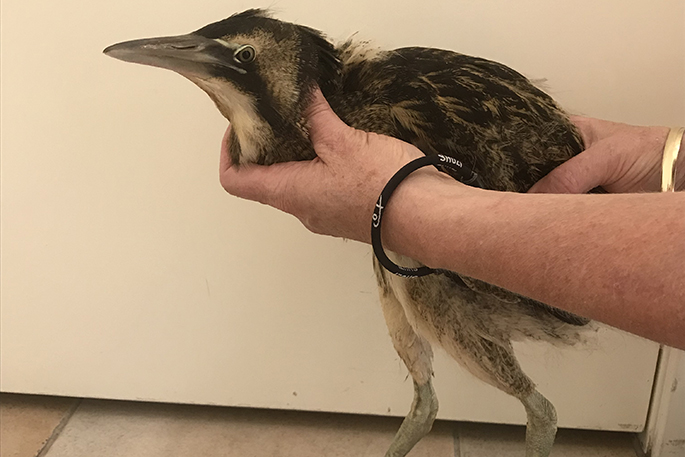

0 comments
Leave a Comment
You must be logged in to make a comment.